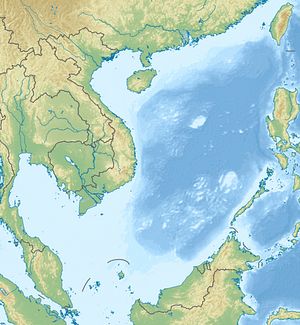China has begun drafting plans for an Air Defense Identification Zone (ADIZ) in the South China Sea, according to a new report from a Japanese newspaper.
On Friday The Asahi Shimbun carried a report that said that “working-level air force officials” in China “have already worked out a draft plan for the prospective” ADIZ for the South China Sea. It also said that the “Air Force Command College, a cadre development and research institution in Beijing that helped draft the East China Sea ADIZ,” has been working on the South China Sea ADIZ for some time now, and submitted an original draft plan to senior military leaders as early as May 2013.
The Asahi Shimbun said that the information came from several Chinese government sources, including “one senior official in a government-affiliated research institution.” Although The Diplomat could not independently confirm the report, The Asahi Shimbun has a strong record of reporting on China and regularly publishes reports on internal Chinese politics and policy.
Moreover, China has strongly implied that it is considering establishing a South China Sea ADIZ, which would presumably be similar to the ADIZ it established over the East China Sea back in November of last year. Immediately following China’s announcement of the East China Sea ADIZ, a Ministry of Defense spokesperson warned that more ADIZs would follow “at the right moment after necessary preparations are completed.”
Many analysts and foreign policymakers have speculated that the South China Sea would be the next area where Beijing would seek to establish an ADIZ. China lays claim to nearly the entire South China Sea, which puts it at odds with numerous Southeast Asian nations that also claim part of the waters.
The United States has gone so far as to publicly warn China against establishing a South China Sea ADIZ. During a visit to the Philippines in January 2013, U.S. Secretary of State John Kerry said: “Today, I raised our deep concerns about China’s announcement of an East China Sea Air Defense Identification Zone. I told the foreign secretary that the United States does not recognize that zone and does not accept it. The zone should while not be implemented, and China should refrain from taking similar unilateral actions elsewhere in the region, and particularly over the South China Sea.”
Establishing a South China Sea ADIZ would also be consistent with China’s recent increased naval patrols of the South China Sea, as well as the reported expansion of those patrols to places like Malaysia.
The Asahi Shimbun report said that Chinese officials were still discussing what areas the ADIZ in the South China Sea will cover. According to Asahi’s sources, some Chinese officials advocate having it cover the entire South China Sea while others are suggesting it only go as far as the Paracel Islands.
The precise dimensions of the South China Sea ADIZ will be important for at least two reasons. First, a more encompassing ADIZ claim would antagonize more of China’s Southeast Asian neighbors, raising the possibility that the Association of Southeast Asian Nations (ASEAN) will be able to unite internally in standing up to China in the South China Sea. By contrast, a narrower ADIZ might allow China to continuing isolating certain countries like the Philippines and Vietnam.
Second, the exact size of the ADIZ is also important in terms of China’s ability to enforce the rules it establishes. The People’s Liberation Army Air Force (PLAAF) lacks enough aircraft with sufficient range to effectively enforce an ADIZ further out in the South China Sea, making it much easier for even smaller nations to openly defy China’s regulations. By contrast, a smaller ADIZ might give the PLAAF a better chance of making the ADIZ more than just Beijing staking a future claim to the area.

































